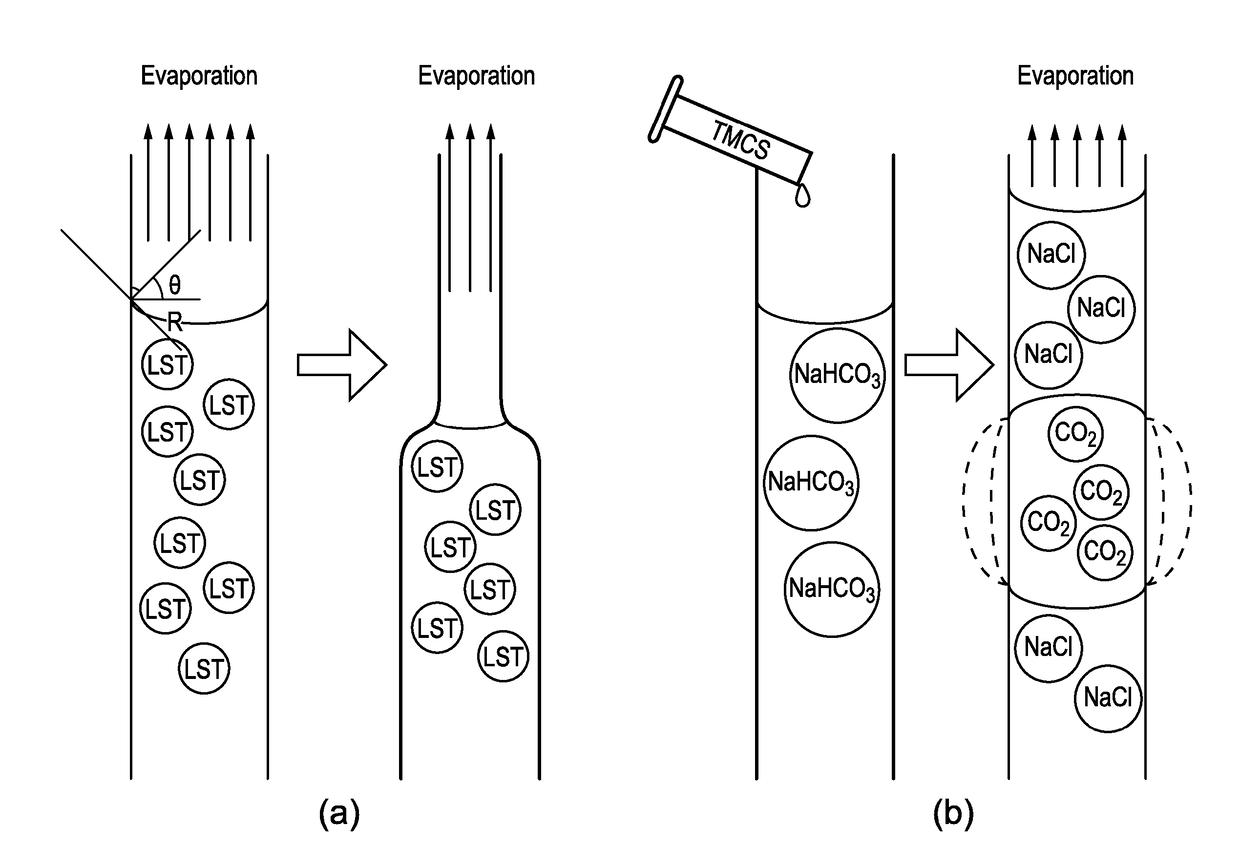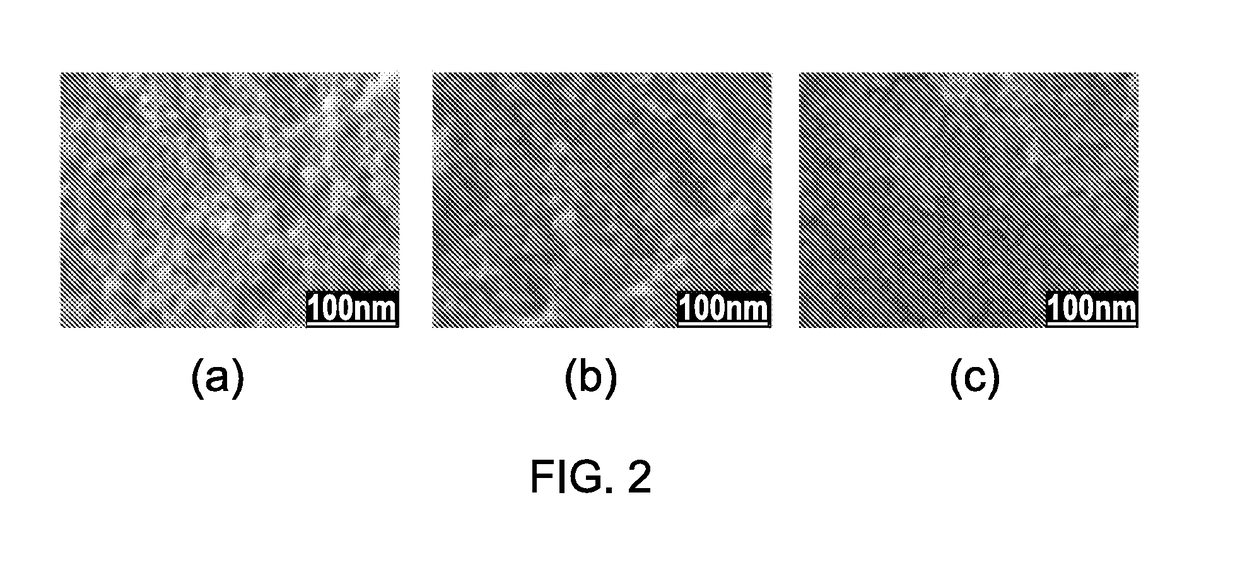Aerogels
- Summary
- Abstract
- Description
- Claims
- Application Information
AI Technical Summary
Benefits of technology
Problems solved by technology
Method used
Image
Examples
example 1
Multi-Step Silica Aerogel Preparation using TEOS as a Source of Silicon
Silica Gel Preparation
[0091]All materials and solvents were purchased from Sigma-Aldrich and used without any further purification. Silica gels were prepared by the hydrolysis of the precursor tetraethoxysilane (TEOS, ≧98%), ethanol (≧99.5%) and de-ionic (DI) water with a molar ratio as TEOS: ethanol: water=2:38:39. In order to speed gelation 34 ml of prepared precursor with 1 ml of catalyst (catalyst was a mixture of ammonium hydroxide (28-30%), ammonium fluoride (≧98%) and water with a molar ratio as NH4OH:NH4F:H2O=8:1:111) were used. In approximate 5 minutes, silica gels were removed from the casting mould and then washed and aged with 500 ml of ethanol for 24 hours.
Drying Process
[0092]After 24 hours of aging ethanol (solvent) was replaced by a mixture of 500 ml DI water and 22 g sodium bicarbonate 99.7%). Silica gels were subsequently soaked in the bicarbonate solution while stirred for 24 hours. At the end o...
example 2
One Pot Silica Aerogel Preparation using Water Glass as a Source of Silicon
[0094]3 ml of trimethylchlorosilane (TMCS) was added in to 5 ml of water glass (sodium silicate: Na2O ˜10.6%, SiO2 ˜26.5%). A thin layer of solid immediately formed on the surface. Then 5 ml of sodium bicarbonate solution was added in, and the solid layer was subsequently broken by using a glass rod. With stirring, the gel was formed in seconds, and aged for approximately 2 hours. The produced sodium chloride was removed by washing the gel with water three times. The gel was dried at 60° C. and under ambient pressure for 24 hours to obtain the silica aerogels.
example 3
Characterisation and Discussion
Characterisations
[0095]FEI XL30 ESEM-FEG (Environmental Scanning Electron Microscope-Field Emission Gun) was used to image the samples in high vacuum mode and 10 KeV accelerating voltage at Newcastle University. Before the SEM imaging, the samples were coated with gold to increase electrical conductivity. Coulter™ SA 3100™ Surface Area and Pore Size Analyzers were used to measure BET (Brunauer-Emmet-Teller) surface area at the Newcastle University. The PANalytical X′Pert Pro Multipurpose Diffractometer (MPD) is used for X-ray powder diffraction (XRPD) analysis at the Newcastle University. The High resolution transmission electron microscopy (HRTEM) and scanning transmission electron microscopy (STEM) experiments were carried out in a Tecnai F30 300 keV microscope at the Materials Science Centre, University of Manchester. The samples for HRTEM and STEM were prepared with ultrasonication of silica aerogels in de-ionised water for a long time until there ...
PUM
| Property | Measurement | Unit |
|---|---|---|
| Temperature | aaaaa | aaaaa |
| Fraction | aaaaa | aaaaa |
| Volume | aaaaa | aaaaa |
Abstract
Description
Claims
Application Information
 Login to View More
Login to View More - R&D
- Intellectual Property
- Life Sciences
- Materials
- Tech Scout
- Unparalleled Data Quality
- Higher Quality Content
- 60% Fewer Hallucinations
Browse by: Latest US Patents, China's latest patents, Technical Efficacy Thesaurus, Application Domain, Technology Topic, Popular Technical Reports.
© 2025 PatSnap. All rights reserved.Legal|Privacy policy|Modern Slavery Act Transparency Statement|Sitemap|About US| Contact US: help@patsnap.com



